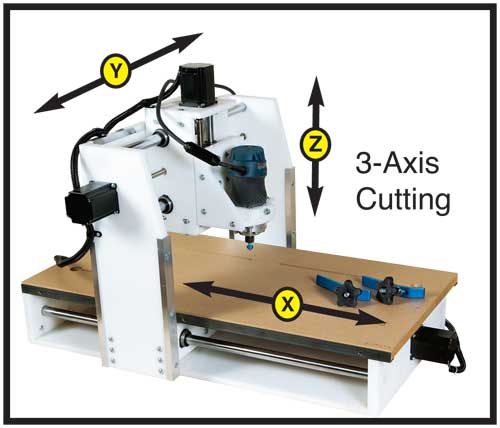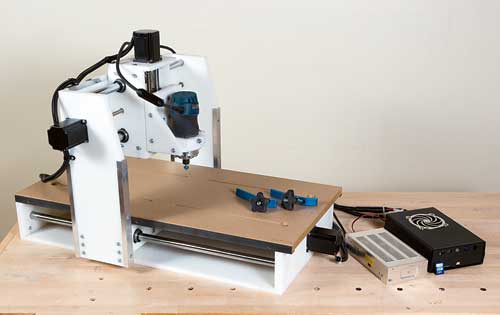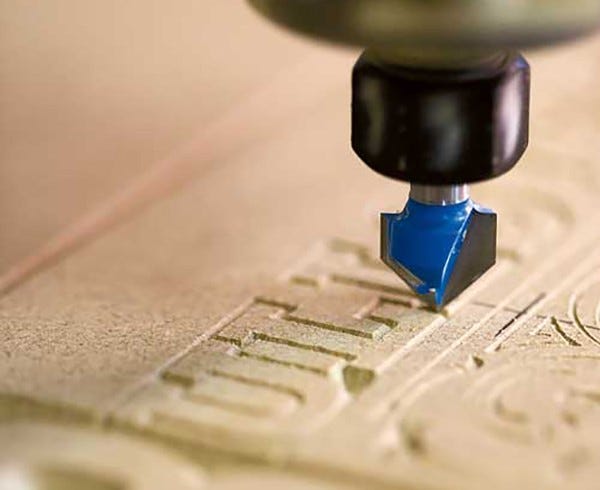If you have had any experience with woodworking projects either by way of your profession or sheer interest in the subject, then you would know how frustrating it can be trying to order boards of custom thickness from the local wood supplier. Of course, you could always use a table saw to decrease the thickness of the board and then clean its edges by employing a jointer, but the work becomes much simpler when a wood planer is used.
Also, given the glaring similarities in operation between a jointer and a planer, a lot of people tend to think that both these woodworking tools can be used for performing the same set of tasks. Sadly, that is not the case. So, this article explains the working of a wood planer and also throws light on the various woodworking applications for which it can be used.
What Is A Wood Planer And How Does It Work?
Simply put, a wood planer is a woodworking tool, which can be used for producing boards of even thickness that also happen to be totally flat on either side. While the traditional wood planer was more of a handheld tool, the modern power planers come with a planing platform for quick and accurate thickness adjustments and can be controlled either manually or electronically.
Basically, what you do is first set the cut depth either by adjusting the cutter head/drum or the planing platform, and switch on the machine. Then, as you feed a board through the machine, it is carried forward by the in-feed roller and placed under the fast spinning blades of the cutter drum. From the other end, the outfeed roller systematically moves the completed section of the board out of the machine and thus a smooth and consistent reduction in thickness is achieved across the board in no time.
Where Does A Planer Prove Useful?
By using a thickness planer, you can take irregular pieces of wood and level its thickness according to your project requirement. As a result, you can buy any thickness of wood from the lumberyard and as long as it is of good quality, you could always put it through a wood planer and achieve the required thickness. In fact, experts use small rough cut blocks and gang feed them into the planer to achieve perfect deck spindles in little time.
For projects that require two edges to be adjoined to each other, a planer can be quite handy. With enough practice, you could easily bevel a door edge accurately up to 5 degrees by integrating an adjustable fence onto the machine. This process of beveling the hinge-less door edges allows the doors to open and close smoothly without clicking or jamming.
Even old wood can be reclaimed and used again in new projects by making use of the flattening qualities of a wood planer. Of course, woodwork purists will be quick to tell you that doing so can nick the blades and kill their sharpness. However, given the growing cost of quality lumber, recycling old wood presents itself as a cost-effective solution. And if it means replacing a set of carbide tipped blades every once in a while, well then you only losing $30-$40 in the process!
Proper Training
Though a wood planer proves to be a handy tool for woodworks, it is not something that you can start working with right away. When planers are operated by inexperienced personnel, they result in tear outs, snipes and inclined planes on the board’s surface, all of which will only increase the work duration and at to the total cost of a project. Therefore, take the time to properly understand the operational aspects of this machine and practice what you have learned with unused boards in your workshop before you actually start using it for a new woodworking project.
Why You Need a Wood Planer
.jpg)
Are you a beginner looking to equip your workshop with the right tools to get the job done or an enthusiast who’s looking for that last push to get a planer? There may be an endless number of tools to get for your shop, but be sure that a planer is toward the top of the list of must-haves. Before getting too carried away, make sure to know the differences between a planer and jointer, and rest assured that they complement each other and that getting a planer is a solid starting point.
What is a planer used for?
A benchtop wood planer is used to produce boards that have an even thickness and are flat on both sides. A planer can take a rough piece of wood and make the parallel faces flat while producing a thickness to your specification. This provides a highly accurate thickness of the finished board for your next woodworking project. So do you need a planer? The answer is yes. By using a benchtop planer, a lot of time, patience and money are saved as opposed to using a hand planer.
In addition to using a planer for flattening rough-cut lumber, a planer is also a tool that can be used to reclaim wood from homes, furniture and barns. When reclaiming wood, you need to be sure to remove any metal pieces, such as nails, screws or hinges. Then the planer can be used to shave off just enough to re-flatten the wood. It could also be used to remove any stains or coloring from the wood so that it’s a perfect fit for your next project.
What are the advantages of a wood planer?
There are many benefits of a wood planer, including saving time, patience and money. Here is a short list of some of the advantages of a wood planer:
Time
Hand planing is a time-consuming activity that often requires a lot of measuring (and remeasuring) to get the thickness exactly right across the entire board.
Patience
Hand planing is a laborious activity that takes patience to ensure the entire surface of the board is smooth. Additionally, not all pieces of purchased and finished lumber are as smooth or precise as you may need for your project.
Money
There is a premium you pay when you purchase a finished board from your lumberyard, so when shopping around, you will often find that rough-cut lumber is considerably less expensive. You also have the opportunity to reclaim wood for a new project and plane it for your needs. In addition, you may be able to buy discounted irregular pieces or scraps as you have the ability to plane them to the correct dimensions.
Custom Board Thickness
If your project calls for a thicker or thinner piece of wood than the normal measurements that are typically found at the store or lumberyard, you may be able to plane the wood to the appropriate thickness for your project.
Easily Use More Exotic Woods for Your Projects
It may be easier to find exotic woods in non-regular cuts or cuts not to the specifications for your project. Using a planer can easily bring them to the thickness and flatness needed.
Garbage In, Garbage Out
When working with wood, most find that when a board is cupped, twisted or bowed, or has an uneven thickness, then the finished project may not look the best. Be sure you’re starting with the right piece of wood by running it through your personal benchtop wood planer.
Are there alternatives?
The short answer is yes. The longer answer is no. An alternative is a hand plane. Hand-planing larger pieces is difficult and time-consuming when compared to flattening a larger piece of wood in a single pass with a benchtop wood planer. There are many other tricks that people try to save a couple of dollars; however, some are unsafe and all are met with less-than-adequate results.
Final Thoughts
Your home woodshop may have many tools; however, each project you do begins and ends with the boards you’re using. There are few things more useful in a shop, especially when using rough-cut lumber, than a planer. A planer isn’t just another piece of equipment on the benchtop taking up room. It is the tool with which you should start every project, giving you the precision and accuracy that you need to make the finished piece you desire.
Different planers may have the option of more than one feed speed. Wahuda offers a single- and a double-feed-speed benchtop planer. Dual-feed speeds give the best options for everyday projects, with faster speeds of 26 fpm or a slow speed of 18 fpm for a finer finish on the board.
Conclusion
Why do you need a wood planer? The short answer is to make your life easier and more efficient in your shop. You’ll find you can save money and reclaim wood. Custom work has never been as simple as when you’ve got the tools to customize the lumber you’re using.




.jpg)
